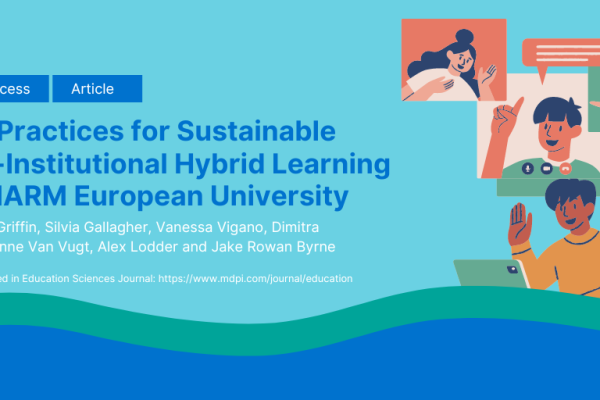Best practices for sustainable inter-institutional hybrid learning

What are our best practices for sustainable inter-institutional hybrid learning? A group of CHARM-EU colleagues, consisting of Daniel Griffin, Silvia Gallagher, Vanessa Vigano, Dimitra Mousa, Sanne Van Vugt, Alex Lodder and Jake Rowan Byrne, published an article on this topic in Education Sciences. The experiences gained by CHARM EU provide practical use cases and recommendations for educational and support staff delivering digital transformation through hybrid classrooms.
CHARM EU offers an inter-institutional Master’s (MSc) in Global Challenges for Sustainability across five European university campuses using innovative, challenge-based, transdisciplinary, and student-centered pedagogies. However, delivering modules across multiple locations at the same time poses a major challenge. Multiple hybrid classrooms solve this challenge by offering spaces for students and staff to teach and learn locally and remotely. The authors of the article in Education Sciences outline the first Participatory Action Research (PAR) cycle iteration of the design, implementation, testing, and delivery of hybrid classrooms within a European university alliance.
Hybrid classroom collaboration was facilitated through videoconference software, and this article describes a collaborative space design for transdisciplinary teamwork within this environment. Perspectives from a technical expert on virtual learning environments, an educationalist who supports teaching staff, and a classroom-based teaching assistant are presented. Integrating educational principles and module learning outcomes, aligning physical build specifications, testing hardware and software, identifying pedagogical needs, facilitating professional development, and ensuring adequate time for testing is crucial for successful hybrid classroom delivery.
DOWNLOAD THE FULL ARTICLE HERE.